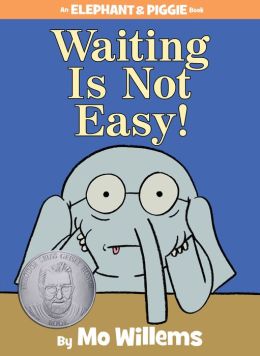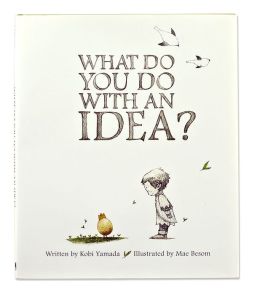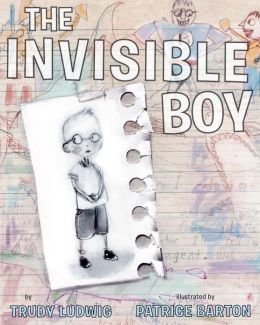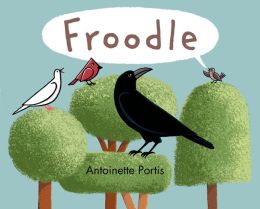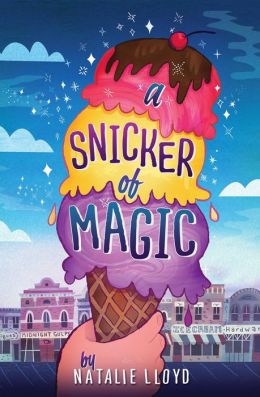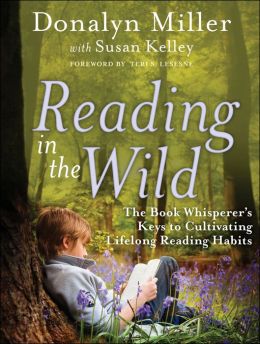Some lessons are learned the hard way. I remember when I first started using a computer and had to learn the stop and save lesson. Now most programs automagically save as you go. Of course, new tech....new problems.
Recently I had to take my iPad back to factory settings. Yes, you all know where this is going. All the way back to factory settings. No problem, I thought. I have my pictures backed up, my music is on iTunes, and my contacts live in the cloud. You'd think this might have a happy ending, but it doesn't.
You know all of those applications. All of those applications I love to play with every day. They don't all have a cloud. As the days and weeks pass I discover more and more that I lost forever. My Photo365 calendar - gone. The inventory of my picture books painstakingly typed into BooksApp. Goodbye. Yep, never to be found again. Perhaps the worst loss, you guessed it, those digital notebooks in Noteshelf.
The moral of the story. If you buy an app that is saving important information, make sure the information lives in the cloud.
Of course, I'm hoping someone will read this and tell me about some magical fix I have yet to find, but for now I'm reconsidering paper and giving more respect to "the cloud".
A side note: It seems Photo365 has a cloud option so I'm trying to play with that. Also, Noteshelf can be shared with Evernote by purchasing another application. I'm giving that a try too. Of course, I'd love any suggestions you have or applications that automagically back up.
It's not what we know, it's what we're willing to learn.
Thursday, January 8, 2015
Monday, January 5, 2015
14 Books I Loved in 2014
As I typed a reflection of 2014, I realized how many books I read in 2014 that I just loved. Here are 14 of my favorites --- not necessarily published in 2014.
5 Picture Books
Waiting is Not Easy by Mo Willems (2014): It's hard to be patient when you are waiting on a book as fun as this one. Students loved it --- and so did I.
The Most Magnificent Thing by Ashley Spires (2014): This book speaks to perseverance and hard work. Sometimes when we have an idea, we have to try and try again.
What Do You Do with an Idea? by Kobi Yamada, Mae Besom (illustrator): Speaking of ideas....have you ever had an idea that just stays with you and won't go away. This book is for you!
The Invisible Boy by Trudy Ludwig, Patrice Barton (illustrator): This book has a beautiful message. First shared with me by Ruth Ayres, I fell in love immediately with this character who goes virtually unnoticed each day until a new friend arrives.
Froodle by Antoinette Portis. This book is fun to read. Who says birds have to chirp? This book reminds us that sometimes things don't have to be the same.
5 Beginning Chapter Book / Middle Grade / YA Books (yes, we could debate my categories)
Dory Fantasmagory (beginning chapter book) by Abby Hanlon (2014): Who knew I'd love this so much? Dory just wants to play with her brother and sister, but they aren't so crazy about that idea. Can Dory find a way to join the fun? The way the story sometimes steps into graphic novel-like scenes is perfectly fun for young readers. Counting down the days until Dory and the Real True Friend comes out 7-7-2015!
Rump: The True Story of Rumplestiltskin by Liesel Shurtliff (2014) Loved. Loved. Loved, Rump. It's always fun to see a fairy tale from another point of view, and this book is delightful. (more about Rump here)
Eleanor and Park by Rainbow Rowell (2013): Eleanor and Park is the story of an unlikely friendship that grows into love as these two begin to trust and take care of one another.
A Snicker of Magic by Natalie Lloyd (2014): Felicity and her family have moved to Midnight Gulch. Midnight Gulch isn't your ordinary town. It's a town with a story, a little magic, and a terrible curse. (read more here)
One for the Murphys by Lynda Mullaly Hunt (2013): Carley moves in with Murphys after some difficulties with her mom and her mom's boyfriend. The Murphys give her a glimpse at a different life and help her to learn a little about herself. (read more here)
4 Other
Rethinking Intervention by Shari Frost (2013): Frost makes us rethink our current systems of intervention by considering what students need in the classroom and from the support they receive. (more here)
Reading in the Wild by Donalyn Miller (2013): This book was our #cyberPD choice for 2014. Donalyn shares ways to think about developing readers that read beyond our regular school day. (#cyberPD collection of posts is here)
The Invention of Wings by Sue Monk Kidd (2014): This story of a young slave girl, Hetty, and her master's daughter, Sarah. These two girls, nearly the same age, lead very different lives. The story travels across decades as they both try to make sense of their lives and change the world around them. (read more here)
I am Malala by Malala Yousafzai and with Patricia McCormick (2014): If you haven't read this yet, you should. I learned so much about a life so different from the one I know. I'm amazed by Malala's strength and the importance of the message she shares.
5 Picture Books
Waiting is Not Easy by Mo Willems (2014): It's hard to be patient when you are waiting on a book as fun as this one. Students loved it --- and so did I.
The Most Magnificent Thing by Ashley Spires (2014): This book speaks to perseverance and hard work. Sometimes when we have an idea, we have to try and try again.
What Do You Do with an Idea? by Kobi Yamada, Mae Besom (illustrator): Speaking of ideas....have you ever had an idea that just stays with you and won't go away. This book is for you!
The Invisible Boy by Trudy Ludwig, Patrice Barton (illustrator): This book has a beautiful message. First shared with me by Ruth Ayres, I fell in love immediately with this character who goes virtually unnoticed each day until a new friend arrives.
Froodle by Antoinette Portis. This book is fun to read. Who says birds have to chirp? This book reminds us that sometimes things don't have to be the same.
5 Beginning Chapter Book / Middle Grade / YA Books (yes, we could debate my categories)
Dory Fantasmagory (beginning chapter book) by Abby Hanlon (2014): Who knew I'd love this so much? Dory just wants to play with her brother and sister, but they aren't so crazy about that idea. Can Dory find a way to join the fun? The way the story sometimes steps into graphic novel-like scenes is perfectly fun for young readers. Counting down the days until Dory and the Real True Friend comes out 7-7-2015!
Rump: The True Story of Rumplestiltskin by Liesel Shurtliff (2014) Loved. Loved. Loved, Rump. It's always fun to see a fairy tale from another point of view, and this book is delightful. (more about Rump here)
Eleanor and Park by Rainbow Rowell (2013): Eleanor and Park is the story of an unlikely friendship that grows into love as these two begin to trust and take care of one another.
A Snicker of Magic by Natalie Lloyd (2014): Felicity and her family have moved to Midnight Gulch. Midnight Gulch isn't your ordinary town. It's a town with a story, a little magic, and a terrible curse. (read more here)
One for the Murphys by Lynda Mullaly Hunt (2013): Carley moves in with Murphys after some difficulties with her mom and her mom's boyfriend. The Murphys give her a glimpse at a different life and help her to learn a little about herself. (read more here)
4 Other
Rethinking Intervention by Shari Frost (2013): Frost makes us rethink our current systems of intervention by considering what students need in the classroom and from the support they receive. (more here)
Reading in the Wild by Donalyn Miller (2013): This book was our #cyberPD choice for 2014. Donalyn shares ways to think about developing readers that read beyond our regular school day. (#cyberPD collection of posts is here)
The Invention of Wings by Sue Monk Kidd (2014): This story of a young slave girl, Hetty, and her master's daughter, Sarah. These two girls, nearly the same age, lead very different lives. The story travels across decades as they both try to make sense of their lives and change the world around them. (read more here)
I am Malala by Malala Yousafzai and with Patricia McCormick (2014): If you haven't read this yet, you should. I learned so much about a life so different from the one I know. I'm amazed by Malala's strength and the importance of the message she shares.
Sunday, January 4, 2015
Canva for Design
It's DigiLit Sunday. Stop by Reflections on the Teche to link and find other posts about digital literacy. Thanks, Margaret, for hosting. #K6diglit
Canva allows you to pick the size of your design, add your own images or use images already available in the application. It's easy to add text and changing the color or font is a snap. There are many choices for your layout and changing backgrounds is effortless. The search makes finding things on Canva easy to do.
Canva is a social networking design tool. It's easy to see the designs of friends and other users. It works with social media allowing you to share with Pinterest, Facebook, and Twitter. I have not found the share feature to be quite as smooth as the application itself, but I'm just learning Canva so it's likely user error.
Julie tells me Canva has a Design School and suggests checking it out. Our internet is limited so I'll have to save that for a day at the coffee shop, but I look forward to going to design school to learn more that I can do.
So far, I've created this quote pic:
and a new Facebook cover page:
Thanks, Julie! I can't wait to spend some more time with Canva. #playtolearn
Thursday, January 1, 2015
Fish in a Tree
"And I think of words. The power they have. How they can be waved around like a wand - sometimes for good...and how words can also be used for bad." -----Ally Nickerson, Fish in a Tree by Lynda Mullaly Hunt
While at NCTE I had the opportunity to listen to Lynda Mullaly Hunt share her story. As a teacher of reading, I know her story isn't an uncommon story. Reading doesn't come easy to everyone. Still, there's something about hearing it told. There's something about feeling the sting of the words. There's something about watching someone's eyes as she talks about all the people who didn't believe. There's something about hearing the story of the moment that changed everything. Lynda shared a story of the teacher who made all the difference because he believed in her. I listened to her story and was reminded of the important work we do as teachers. I was reminded how necessary it is that we always believe in the possible.
I raced to the exhibition hall after listening to her speak. I knew I needed to find an arc of her upcoming book, Fish in a Tree. With a little finesse I was able talk someone out of one of the last copies of the book.
It's been busy since then. Thanksgiving. Christmas. Travel. School. Finally, I was able to sit down with the book and it did not disappoint.
Fish in a Tree is a story of Ally Nickerson. School isn't easy for Ally. When her teacher leaves for maternity leave she doesn't expect things to be any better with a guest teacher. However, she didn't plan on Mr. Daniels. She didn't know that Mr. Daniels might see through her tough shell and into the possibility all tucked inside of her. She didn't know Mr. Daniels would help her to see words in a new way --- and see herself in a new light.
As in One for the Murphys, it didn't take me long to fall in love with the characters in this story. Ally feels like an outsider. With kids like Shay and Jessica constantly laughing at her, her classroom isn't a comfortable place to be. It doesn't help that everything she tries to do is so hard for her, yet looks like she hasn't even tried. What she doesn't know is that she isn't the only kid that feels like this. What she doesn't know is not everyone is interested in using words to tear people down. She soon builds a friendship with Keisha and Albert. This friendship will help give her the strength to stand up and reach for all that is possible.
Fish in a Tree is an important reminder to teachers everywhere about the message we send to children with our words every day. The book speaks to the power of the possible. We aren't all the same and we don't all learn in the same way. This book also sends a strong message to all of those who have had to work hard to learn to read. Not only will it give those working hard to learn to make sense of words strength, but it will also help others see inside this tough challenge.
The good news is, it looks like the book will be available February 5th. Mark your calendars. You won't want to miss it.
Tuesday, December 30, 2014
Teaching and Learning in an Idea Economy
Recently I attended a meeting for educators at our State Department of Education. As we were discussing current concerns over standardized testing in our schools, the governor walked into the room. You can imagine the surprise to see our governor, John Kasich, step into the room and take a seat in the discussion group.
As he talked he began to discuss the changes coming to our state, which he explained is no longer an agriculture economy or an industrial economy, but instead needs to move toward a "cloud" economy. I can't speak for the governor, but in my mind he was talking about the way technology has shifted economies. No longer are we limited to goods produced in our state and no longer are our companies limited to buyers in our area. Money can be made not just through industry or service, but through ideas. The internet has opened new possibilities for thinkers and entrepeneurs.
What does it mean to be teaching children in a time of ideas? How do we prepare them for an idea economy? It isn't easy to revision school as we know it. What do we do that needs to stay and what needs to go? Our classrooms and schools need to look and function differently. I'm not sure what that means, but I do think some important thinking starts here:
How are students using time? My new question has become, "Is what students are doing worth their time?" I think we have to be willing to really think about this. Students in an idea economy need to know how to ask big questions and seek answers. These answers don't always solve problems, but instead lead to new questions. Worksheets (paper or digital) and assigned tasks do not create thinkers and solvers. Are students spending time in higher order thinking opportunities that move beyond remembering/understanding/applying and toward analyzing/evaluating/creating? Are there opportunities to learn from peers and collaborate with others?
Who owns the learning? I'm amazed at how much my role as a teacher has changed since I first started teaching. It's sometimes uncomfortable, but always rewarding. No longer do I plan every step, every minute. Teaching requires more thinking on my feet, more following, more listening, more understanding. Students are now the decision makers in their learning. When students are not sitting beside us, what are they doing? Are they doing something we told them to do or something they decided to do? Is the work they are doing authentic? Is it connected? Is it taking them deeper in their understanding?
Do we have environments of trust? When I went to school, we seemed to most often function on compliance. To be good at school meant following rules and completing tasks assigned. Today learning has evolved. Ownership and choice are essential in personalized learning environments. We have to trust that children can make decisions about their learning, set their own goals, and talk about their own progress. We have to trust that schools can tell their own stories and that districts can make their own decisions. We have to allow communities to determine what their children need.
Are students and learning communities connected? In an idea environment, learners are connected. They are connected to their learning, to their peers, to their community, to information, to resources and to learning communities beyond their classroom. More and more I consider the way what we are doing connects to life beyond our day. I want students to be able to take what we learn and make it a part of their everyday life.
Is learning personalized? I love pondering this graphic of Personalization vs. Differentiation vs. Individualization. One of my favorite statements in personalization is "Connects learning with interests, talents, passions and aspirations." Are the structures we have set up flexible enough that students drive their own learning?
Are we resource rich? When developing learners willing to problem solve, think deeply, ask tough questions, formulate ideas, collaborate with peers, and create new understandings resources are essential. Are our classroom libraries able to support questioning, thinking, and learning more? Are we connected to resources that will support student learning? I often wonder what would happen if we took funds used for testing and moved them to resources. Oh, to dream...
Are we moving beyond standardized measures? We are often held back by standardized assessments. Standardized tests seek right answers. They work in linear formats. They require students to work for longer periods of time than developmentally acceptable. They take time away from real learning. They assume that everyone learns at the same rate and thinks in the same way. Our country has been successful because of innovators, risk-takers, creators, and communicators....not fill-in the bubble thinkers. Are standardized tests measuring what we value? Can they? What measures can be used to know if schools are effectively supporting student progress?
How do you think teaching and learning are different in an "idea economy"? What should we change? What needs to stay the same?
Other posts about rethinking education are here:
Follow Cathy's board Rethinking Education on Pinterest.
As he talked he began to discuss the changes coming to our state, which he explained is no longer an agriculture economy or an industrial economy, but instead needs to move toward a "cloud" economy. I can't speak for the governor, but in my mind he was talking about the way technology has shifted economies. No longer are we limited to goods produced in our state and no longer are our companies limited to buyers in our area. Money can be made not just through industry or service, but through ideas. The internet has opened new possibilities for thinkers and entrepeneurs.
What does it mean to be teaching children in a time of ideas? How do we prepare them for an idea economy? It isn't easy to revision school as we know it. What do we do that needs to stay and what needs to go? Our classrooms and schools need to look and function differently. I'm not sure what that means, but I do think some important thinking starts here:
How are students using time? My new question has become, "Is what students are doing worth their time?" I think we have to be willing to really think about this. Students in an idea economy need to know how to ask big questions and seek answers. These answers don't always solve problems, but instead lead to new questions. Worksheets (paper or digital) and assigned tasks do not create thinkers and solvers. Are students spending time in higher order thinking opportunities that move beyond remembering/understanding/applying and toward analyzing/evaluating/creating? Are there opportunities to learn from peers and collaborate with others?
Who owns the learning? I'm amazed at how much my role as a teacher has changed since I first started teaching. It's sometimes uncomfortable, but always rewarding. No longer do I plan every step, every minute. Teaching requires more thinking on my feet, more following, more listening, more understanding. Students are now the decision makers in their learning. When students are not sitting beside us, what are they doing? Are they doing something we told them to do or something they decided to do? Is the work they are doing authentic? Is it connected? Is it taking them deeper in their understanding?
Do we have environments of trust? When I went to school, we seemed to most often function on compliance. To be good at school meant following rules and completing tasks assigned. Today learning has evolved. Ownership and choice are essential in personalized learning environments. We have to trust that children can make decisions about their learning, set their own goals, and talk about their own progress. We have to trust that schools can tell their own stories and that districts can make their own decisions. We have to allow communities to determine what their children need.
Are students and learning communities connected? In an idea environment, learners are connected. They are connected to their learning, to their peers, to their community, to information, to resources and to learning communities beyond their classroom. More and more I consider the way what we are doing connects to life beyond our day. I want students to be able to take what we learn and make it a part of their everyday life.
Is learning personalized? I love pondering this graphic of Personalization vs. Differentiation vs. Individualization. One of my favorite statements in personalization is "Connects learning with interests, talents, passions and aspirations." Are the structures we have set up flexible enough that students drive their own learning?
Are we resource rich? When developing learners willing to problem solve, think deeply, ask tough questions, formulate ideas, collaborate with peers, and create new understandings resources are essential. Are our classroom libraries able to support questioning, thinking, and learning more? Are we connected to resources that will support student learning? I often wonder what would happen if we took funds used for testing and moved them to resources. Oh, to dream...
Are we moving beyond standardized measures? We are often held back by standardized assessments. Standardized tests seek right answers. They work in linear formats. They require students to work for longer periods of time than developmentally acceptable. They take time away from real learning. They assume that everyone learns at the same rate and thinks in the same way. Our country has been successful because of innovators, risk-takers, creators, and communicators....not fill-in the bubble thinkers. Are standardized tests measuring what we value? Can they? What measures can be used to know if schools are effectively supporting student progress?
How do you think teaching and learning are different in an "idea economy"? What should we change? What needs to stay the same?
Other posts about rethinking education are here:
Follow Cathy's board Rethinking Education on Pinterest.
Sunday, December 14, 2014
DigLit Sunday: Infographics #playtolearn
I've been a bit fascinated by infographics lately. When they pop into my feed, I can't help but take a look at them. They're an interesting form of digital media. They look official, but often lack any kind of reference to sources. For this reason, we have to read them carefully and consider them with a critical eye.
Infographics are not only full of interesting thinking, but they are pleasing to the eye. There's something about being able to think through a topic graphically. Looking at an infographic I've always thought they must be easy to make, but I have found considering your content and message for an infographic to me more challenging than I had anticipated.
Yesterday, I decided to give creating an infographic a try for my post, Teacher as Personal Trainer. I used Piktochart for yesterday's infographic. Templates were limited unless you are willing to pay $29 per month which I consider to be far out of my price range. I found creating on the site to be a bit time consuming, but manageable. There were many options for sharing the final product.
Today I thought I would try Venngage. While this site was much easier to use, I found embedding the final infographic to be more of a challenge. In Piktochart the embed code could be adjusted before copying it. Piktochart automatically adjusted ratios for effective presentation. Today's infographic about DigiLitSunday wasn't as easy to adjust to embed into my blog. You cannot see the entire infographic here, but instead will have to click this link.
I'm thinking infographics could be useful as an option for sharing thinking digitally. Though infographics aren't new, I'm in the beginning stages of exploring their possibilities for students. I'm wondering what you have tried. Favorite creation apps for infographics? Infographics you like to use as mentor texts? How have they worked in your classroom?
Infographic Resources
Cool Infographics (mentor text)
Daily Infographic (mentor text)
Kids Discover: Infographics (mentor text)
Now I See: Collection of Infographic Resources (information)
Cybraryman: Infographics (information)
The Guardian: Infographics What Children Can Learn from Data (information and mentor text)
Infographics are not only full of interesting thinking, but they are pleasing to the eye. There's something about being able to think through a topic graphically. Looking at an infographic I've always thought they must be easy to make, but I have found considering your content and message for an infographic to me more challenging than I had anticipated.
Yesterday, I decided to give creating an infographic a try for my post, Teacher as Personal Trainer. I used Piktochart for yesterday's infographic. Templates were limited unless you are willing to pay $29 per month which I consider to be far out of my price range. I found creating on the site to be a bit time consuming, but manageable. There were many options for sharing the final product.
Today I thought I would try Venngage. While this site was much easier to use, I found embedding the final infographic to be more of a challenge. In Piktochart the embed code could be adjusted before copying it. Piktochart automatically adjusted ratios for effective presentation. Today's infographic about DigiLitSunday wasn't as easy to adjust to embed into my blog. You cannot see the entire infographic here, but instead will have to click this link.
I'm thinking infographics could be useful as an option for sharing thinking digitally. Though infographics aren't new, I'm in the beginning stages of exploring their possibilities for students. I'm wondering what you have tried. Favorite creation apps for infographics? Infographics you like to use as mentor texts? How have they worked in your classroom?
Infographic Resources
Cool Infographics (mentor text)
Daily Infographic (mentor text)
Kids Discover: Infographics (mentor text)
Now I See: Collection of Infographic Resources (information)
Cybraryman: Infographics (information)
The Guardian: Infographics What Children Can Learn from Data (information and mentor text)
Saturday, December 13, 2014
Teacher as Personal Trainer
Sometimes I get on a kick where I vow I am going to get physically fit. I'm going to exercise more I tell myself and off to the gym I go. Every time I go, I use the same three machines. I start on the elliptical, move to the tread mill and then finish on the bicycle. The bicycle is boring for me. I don't like it a bit, but I do it so I can get the final "calories burned" number I want.
My intentions to exercise are always good, but it isn't long before my interest fades. Doing the same thing every day gets old. I don't know how to use the other machines and honestly don't know which ones I should use for the results I want. I'm all about that "calories burned" number anyway, but many fitness friends say that isn't enough.
I can't help but wonder if my workouts would be better if I had a personal trainer. If I had someone to get me started, develop a plan, and help me when things get hard. If I had someone who loved and believed in physical fitness enough for both of us. If I had someone who could fix the little things I wasn't doing quite right or make changes as I needed them.
Teacher as Personal Trainer
Today as I moved from room to room to support readers I couldn't help but think about how much a teacher is like a personal trainer. As I watch students during independent times in their learning, I realize how important the teacher is in helping students to make choices that keep them learning.
Often we set up elaborate plans so we can work with small groups and provide individualized instruction, but these plans can take away from the time students need to read, write, and create. If we believe students only learn when they are beside us, we are underestimating the power students have in their own learning. What are students doing when they are not beside us? Students spend a lot of time working independently, and the teacher as a personal trainer makes sure this time is valuable for students.
The teacher as a personal trainer (I'm new to creating an infographic and wanted to play with Piktochart. #playtolearn):
Maybe teachers are more like personal trainers as they help learners find places to begin, develop a plan, set appropriate goals and help when things get hard. Students feel our love for the books, writing, and thinking we share with them. We sometimes have to believe enough for both of us. We fix things when they are not quite right, and make changes for our learners. We're in and out --- just enough. Most of all, we believe...and our students amaze us every day.
My intentions to exercise are always good, but it isn't long before my interest fades. Doing the same thing every day gets old. I don't know how to use the other machines and honestly don't know which ones I should use for the results I want. I'm all about that "calories burned" number anyway, but many fitness friends say that isn't enough.
I can't help but wonder if my workouts would be better if I had a personal trainer. If I had someone to get me started, develop a plan, and help me when things get hard. If I had someone who loved and believed in physical fitness enough for both of us. If I had someone who could fix the little things I wasn't doing quite right or make changes as I needed them.
Teacher as Personal Trainer
 |
| Carolyn Carr talks with readers during Reader's Workshop. |
Often we set up elaborate plans so we can work with small groups and provide individualized instruction, but these plans can take away from the time students need to read, write, and create. If we believe students only learn when they are beside us, we are underestimating the power students have in their own learning. What are students doing when they are not beside us? Students spend a lot of time working independently, and the teacher as a personal trainer makes sure this time is valuable for students.
The teacher as a personal trainer (I'm new to creating an infographic and wanted to play with Piktochart. #playtolearn):
Subscribe to:
Posts (Atom)

